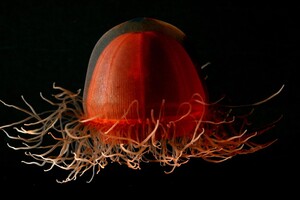Probably, organisms began to die out due to the movement of continents.

Scientists said that mass extinction of sea creatures can be related to the movement of the continents. According to researchers, the position of the continents could have filled the water with the oxygen necessary for life, and their movement could have caused the opposite effect, reports Scitechdaily.
Also read: Sixth mass extinction: scientists named new time limits
“Continental drift seems so slow that it can't lead to anything drastic, but when the ocean is in full bloom, even a seemingly minor event can cause a mass die-off of marine life,” said one of the authors of the new study, Andy Ridgewell, a geologist at the University of California, Riverside.
The return flow carries nutrients released from the sunken organic matter back to the surface, where they support plankton growth. Today, the Earth's oceans are rich in a variety of species of fish and other animals, whose life is supported both by a continuous supply of oxygen from the depths and organic matter from the surface.
A new study has shown that this circulation of oxygen and nutrients can to stop Scientists used computer simulations to find out if the movement of the continents affects this circulation. And they were surprised to find that such an influence is really present.
“Many millions of years ago, shortly after life began in the ocean, the entire global ocean circulation appeared to periodically cease. “We were surprised to find that the movement of the continents could cause surface water and oxygen to stop sinking, possibly dramatically affecting how life evolved on Earth,” Ridgewell said.
Until now, the models used to study the evolution of marine oxygen over the past 540 million years were relatively simple and did not take into account ocean circulation. In these models, ocean anoxia – times when oxygen in the ocean disappeared – suggested a drop in the concentration of oxygen in the atmosphere.
According to Alexander Pol, the lead author of the study, scientists previously assumed that the change in oxygen levels in the ocean reflects similar processes in the atmosphere. The new work used for the first time a model in which the ocean was represented in three dimensions and in which currents were taken into account. The model showed that the collapse of the global water circulation could have led to a sharp separation of oxygen levels at the upper and lower depths.
This separation meant that the entire seafloor, except for shallow areas near the coast, was completely deprived of oxygen by many tens million years, up to about 440 million years ago. According to scientists, this meant death for all creatures that could not swim closer to the surface of the water. However, a sufficient amount of oxygen was still observed in the atmosphere.
The authors of the new paper do not indicate whether or when something similar might happen again in the future. Determining when a collapse will occur and what will cause it is difficult.
However, existing climate models confirm that increasing global warming will weaken ocean circulation, and some models even predict a possible the collapse of a circulation branch that begins in the North Atlantic.
Related video
In theory, an unusually warm summer or rock erosion could set off a cascade of processes that would “change life as we know it now,” Ridgewell said. ».




